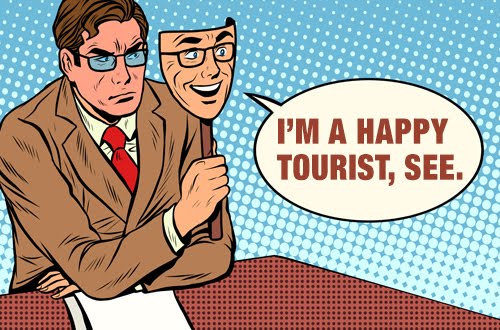 This article is a brief brand analysis, not a political opinion piece.
This article is a brief brand analysis, not a political opinion piece.We at Hornsby Brand Design are always encouraging our clients to "think outside the box", "stand out in the clutter," "zig when the competition is zagging." The success of that marketing strategy was never more on display than in the 2016 presidential election campaign. In fact, as reported by CBS News, even House Speaker Paul Ryan chimed in, calling Donald Trump's election win "the most incredible political feat I have seen in my lifetime."
To say Trump zigged when others zagged is an understatement of cataclysmic proportions. He positioned himself as a non-politician—proving that point on many levels—to many Americans' chagrin. He garnered negative media attention repeatedly that surprisingly did not seem to have affect, or if it did, it was only temporary. He'd call people names and received some reciprocal name-calling. Members of his own party were disembarking the train in droves at one point. The campaign seemed to be derailing, and near the end Trump was asked to stop tweeting by his own staff. As brand marketers, we would've categorized his PR as being in crisis-mode for much of his campaign. But Trump won, astonishing not only Americans, but the world.
How did he do this? Perhaps his billionaire-business expertise gave him the edge. Maybe...he read our articles on the five disciplines in "Building a Charismatic Brand" (tongue firmly in cheek). Regardless of your political affiliation, Trump succeeded, so we wanted to take this opportunity to briefly analyze his process in light of branding techniques and glean some application for our own business campaigns:
- Market Niche: Trump targeted a forgotten demographic. He differentiated himself from his competitors. He was the "outsider," who built trust among those who considered their political grievances finally heard.
- Market Placement: He knew his target and traveled and communicated where they were, speaking in five states daily up until the last day of campaigning, 133 speeches in just the last week.
- Message Repetition: He was tireless in "hammering on the sore tooth." He spoke his target's language and he did it consistently and with frequency.
- Message Focus: Toward the end of his campaign, especially, he stayed on the message his target wanted and needed to hear in order to get on board.
- Brand Integrity: He understood his brand as a brawler and "winner." Despite the set-backs that would normally ruin candidates, Trump consistently lived up to his brand, enhancing his brand's authenticity and appeal. This gave supporters the push needed to help move the Trump Train forward even with doubt of the unknown casting a shadow in the distance. In a word, "trust."
- Brand Team: He surrounded himself with a cast of experts who knew the business of politics yet were behind and supported his brand, ensuring that his brand would not be sacrificed or watered down. He executed some team member suggestions and not others, keeping his brand as an "outsider" intact.
Bottom-line: Brand differentiation and authenticity lays the rails to success and strengthens the brand, enabling your brand to overcome even the most difficult obstacles. For help with zigging when others zag, contact us at info@hornsbybrandesign.com.

























